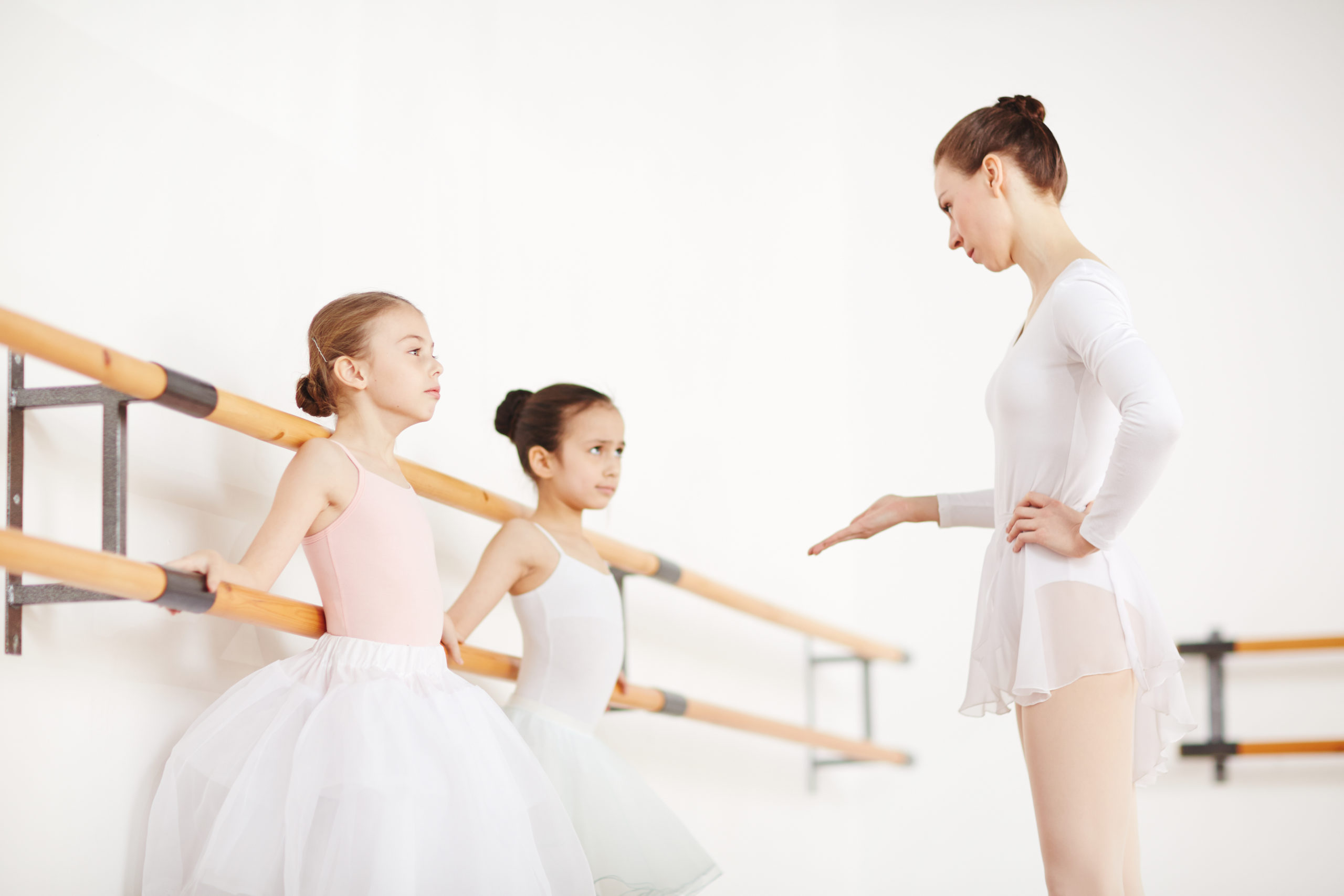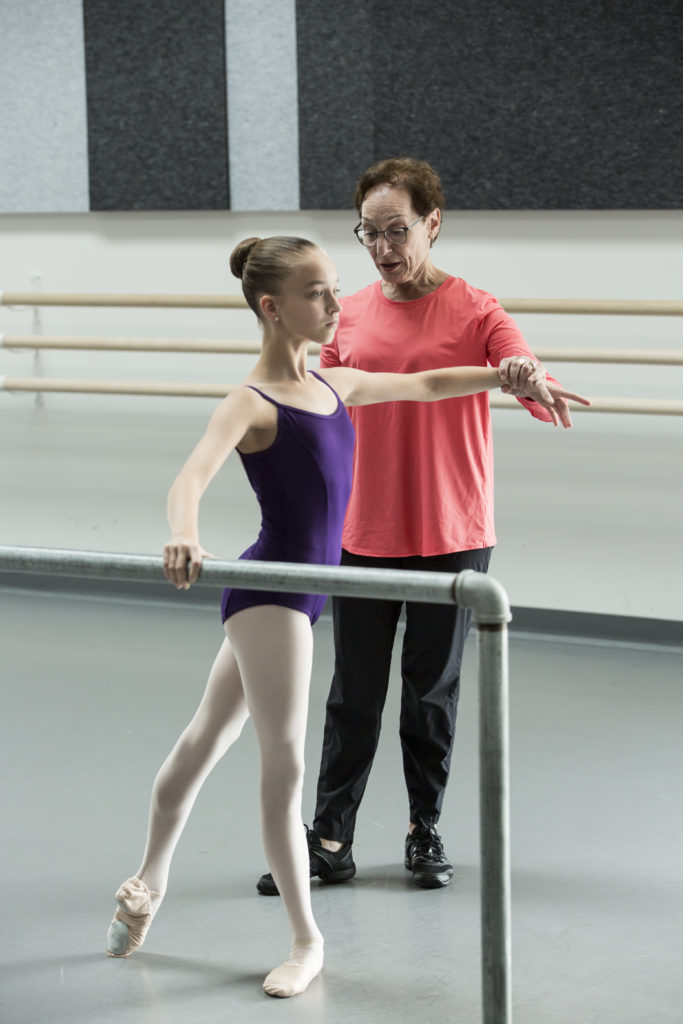
As a teacher, you know how challenging it is to become a dancer. Pre-professional dance training has always been tough, and students need to be resilient to handle the realities of the industry, from casting disappointments to injuries. But how do you most effectively prepare them?
Unfortunately, teaching styles that are borderline abusive, or even explicitly so, have been widely normalized in dance environments. Often these behaviors are touted as “tough love,” and excused because it’s the way we’ve been taught ourselves. But what is tough love, really? When applied correctly, mental health experts agree that it can be an effective teaching tool, but there is a delicate and important balance that must be maintained between toughness and love.
What is tough love?
Jo-Anne La Flèche, a Montreal–based psychologist and expert in dance psycho-pedagogy, says the concept of tough love comes from educational psychology, and requires balancing the child’s two fundamental needs: “being supported and given affection, and at the same time having a structure that will help that person grow.” She stresses that both of these seemingly contradictory elements must be delivered at the same time.
When discussing tough love, La Flèche brings up one word repeatedly: respect. “The term ‘respect,’ in a clinical sense, is the same as tough love,” she says. “You are saying, ‘I love you, I am here to make you feel secure, and this is a safe place for you to grow.’ And at the same time, if you don’t ask anything exceptional from the student, there is no space for them to get better.”
Getting “tough” right
In dance training, toughness frequently manifests as shame-based motivation—for example, when a teacher calls a dancer forward to demonstrate, knowing that she has not captured the steps. Cat Cogliandro, who uses “they/she” pronouns and whose resumé includes teaching at Broadway Dance Center and Millennium Dance Complex, and directing their own company, CATASTROPHE!, remembers such moments in their training well. “I had been so broken and harmed by [shame-based teaching] for so long that I broke one of my dancers. I destroyed her,” they say. “I have since apologized. I thought the way that my teachers taught me was okay because I thought they were better than me.”
La Flèche points out that abusive behavior usually stems from good intentions. “People don’t wake up and pour their coffee thinking ‘I’m going to be abusive today,’” she says. As a teacher, you want to prepare your students to overcome obstacles and be autonomous. But La Flèche says educators should provide structure, not punishment. We can think of structure as a set of boundaries and expectations rather than punitive repercussions. “That is the difference between being tough and being violent or abusive.”

An effective way to create structure is through clear goal-setting and transparent communication. At Pacific Northwest Ballet School, school principal Abbie Siegel spends at least 400 hours each year in one-on-one conferences with students and their parents. Every student gets at least one annually, and the primary purpose is to set achievable but challenging goals for the dancer. “We want them to work as hard as they can within their capabilities,” says Siegel. Once the objective is set, the teachers hold the student accountable to that goal, whether it takes two weeks or a year to accomplish. If things aren’t going well, Siegel says, communication is key. She would rather have a difficult conversation with a student than leave them wondering why they were not cast or didn’t level up.
For Sheila Barker, a sought-after jazz teacher at Broadway Dance Center, successfully providing structure to her students means relinquishing control. “Structure is moveable, control is stagnant,” says Barker. “And if it is stagnant, then it is hard and it is heartless.” For instance, in a controlling environment a teacher will give their combinations in the manner that they want to, without regard to how the students are doing physically and emotionally. Dancers will either keep up or they won’t. In a structured environment, the class is challenging but can be adapted to meet the students’ needs. “I am willing to learn and grow into what is in front of me,” says Barker.
Getting “love” right
La Flèche notes that, out of fear of being too harsh or abusive, parents and teachers often overcompensate by filling the child’s confidence cup with all the love they can pour. While the intentions may be good, they will not have the desired outcome. “You are placating that person and you aren’t showing your belief in their potential,” says La Flèche. People develop confidence when they overcome obstacles; compliments can’t substitute for the success of meeting goals. “That happens with some overprotected children,” she adds. “When they are confronted with failure, their self-esteem shatters like glass.”
The right kind of love means pushing dancers out of their comfort zones while reminding them that you believe they can do it and are there to help them. Encourage them to try things they do not excel at—for instance, if you have a student who is a stunning jumper, cast them in a turning variation and coach them through their frustrations. “You have to get out of your comfort zone for artistic and technical advancement, but also for confidence,” says La Flèche.

Perhaps the most loving thing you can do is accept your students as whole human beings with complex lives inside and outside of the studio. “They all come from different places,” Siegel says. She points to the coronavirus pandemic. “Some kids have taken on the Zoom situation and it rolls off their back, while others have had to stop.” In the same way, corrections should not be punitive; rather, a student’s behavior should be addressed with curiosity. If a dancer has been late to class three times, for example, Siegel’s approach is not to dole out punishment, but to approach the student and ask why.
The importance of self-reflection
La Flèche says that in order for educators to ensure they are teaching in a way that strikes the right balance, they need to honor themselves as human beings. “Before you walk into the studio, ask yourself ‘How am I feeling today?’,” she says. “If I’m aware that I’m feeling down, vulnerable or anxious, I’ll probably choose to take some emotional distance. I may give my class, but I won’t necessarily ask as much of myself or the learner because I am not in a good emotional state to give constructive feedback, and that’s okay.”
In a dance setting, there are disproportionate power dynamics at work. And when students are working with teachers they admire, the weight of their words and actions are even more impactful. “Fear is embedded inside of the dancers before they come into the room,” notes Barker. She sometimes has her students “shake it out” to try to get them, and herself, out of their heads. “I have to understand that they are here for me and there is a reason for that, accolades that I have worked hard for. But I have to come prepared for them,” she says. “It’s not really about me.”
In the end, the effective use of tough love relies on trust between the teacher and the dancer. To attain real trust with your students, they must believe in your credentials, but they must also see your vulnerability as a human being.




